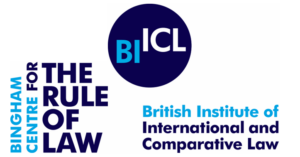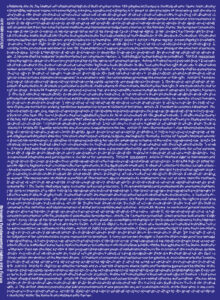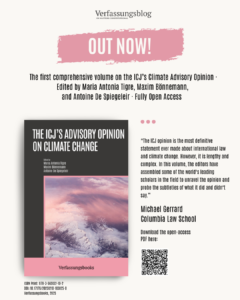NachrichtenBearbeiten
https://odysee.com/@ovalmedia:d/mwgfd-impf-symposium:9
https://totalityofevidence.com/dr-david-martin/
| | Kaum beachtet von der Weltöffentlichkeit, bahnt sich der erste internationale Strafprozess gegen die Verantwortlichen und Strippenzieher der Corona‑P(l)andemie an. Denn beim Internationalem Strafgerichtshof (IStGH) in Den Haag wurde im Namen des britischen Volkes eine Klage wegen „Verbrechen gegen die Menschlichkeit“ gegen hochrangige und namhafte Eliten eingebracht. Corona-Impfung: Anklage vor Internationalem Strafgerichtshof wegen Verbrechen gegen die Menschlichkeit! – UPDATE |
Libera Nos A Malo (Deliver us from evil)
Transition NewsBearbeitenFeed Titel: Homepage - Transition News Bundesregierung: Schwarz-Grün für Ricarda Lang „auf jeden Fall eine Option“
 Union und die Grünen wären nach Ansicht von Grünen-Chefin Ricarda Lang geeignete Koalitionspartner ab 2025. In drei Bundesländern gebe es bereits funktionierende Koalitionen. Baden-Württembergs Ministerpräsident Winfried Kretschmann hofft auf eine „Verbindung von Ökologie und Ökonomie“. Dengue-Fieber in Brasilien ausgebrochen: Kollabiert das Gesundheitswesen?
 Brasilien kämpft gegen den schwersten Dengue-Ausbruch seit Jahrzehnten. In mehreren Gebieten wurde der Notstand ausgerufen. Bank of America investiert wieder in fossile Brennstoffe
 Die Bank of America hat ihr Versprechen zurückgenommen, die grüne Agenda zu unterstützen und nicht mehr in Kohlenwasserstoffe – Kohle, Erdöl und Erdgas – […] Tucker Carlson bestätigt zum ersten Mal offiziell, daß es ein Interview mit Präsident Putin geben wird, und begründet ausführlich warum das nötig ist. Twitter/X
Tucker Carlson bestätigt zum ersten Mal offiziell, daß es ein Interview mit Präsident Putin geben wird, und begründet ausführlich warum das nötig ist. Twitter/X(Sobald eine deutsche Übersetzung vorliegt, wird das hier nochmal...
Umfrage der Bertelsmann Stiftung: Viele junge Deutsche misstrauen Regierung und Parlament
 Viele junge Deutschen zweifeln daran, ob die Politik künftige Herausforderungen lösen könne. Experten sehen darin ein Warnsignal für die Demokratie. | Peter MayerBearbeitenFeed Titel: tkp.at – Der Blog für Science & Politik Kernstücke der neuen WHO Verträge bringen Verlust der nationalen Souveränität der Mitgliedsstaaten
 Bekanntlich sollen bis Ende Mai Änderungen der Internationalen Gesundheitsvorschriften (IGV) beschlossen werden, die der WHO eine massive Ausweitung ihrer völkerrechtlich verbindlichen Vollmachten bringen sollen. […] Hardware-Schwachstelle in Apples M-Chips ermöglicht Verschlüsselung zu knacken
 Apple-Computer unterscheiden sich seit langem von Windows-PCs dadurch, dass sie schwieriger zu hacken sind. Das ist ein Grund, warum einige sicherheitsbewusste Computer- und Smartphone-Nutzer […] 25 Jahre weniger Lebenserwartung für "vollständig" Geimpfte
 Eine beunruhigende Studie hat ergeben, dass Menschen, die mit mRNA-Injektionen „vollständig“ gegen Covid geimpft wurden, mit einem Verlust von bis zu 25 Jahren ihrer […] Ostermärsche und Warnungen vor dem Frieden
 Ostern ist auch die Zeit der pazifistischen und antimilitaristischen Ostermärsche. Grund genug, um davor zu warnen. Tod nach Covid-Spritze: Ärzte im Visier der Justiz
 In Italien stehen fünf Ärzte nach dem Tod einer jungen Frau aufgrund der „Impfung“ vor einer Anklage. |
NZZBearbeiten
Feed Titel: Wissenschaft - News und Hintergründe zu Wissen & Forschung | NZZ
ERKLÄRT - Ab welcher Dosis Alkohol ungesund wird und was er im Körper bewirkt
Das Pariser Klimaabkommen ist zehn Jahre alt: (k)ein Grund zum Feiern
Nachdenken ist gut – endloses Grübeln macht krank. So kann man es stoppen
Im Kriegskanu über die Ostsee: Archäologen sammeln Hinweise auf einen bronzezeitlichen Überfall auf eine Insel – und zur Herkunft der Angreifer
Ein 400 000 Jahre alter Campingplatz zeigt: Menschen entzündeten Feuer früher als angenommen
VerfassungsblogBearbeiten
Feed Titel: Verfassungsblog
Schöne, friedliche Tage
Was soll man sagen über dieses Jahr 2025? Je weniger, desto besser. Die ganzen grimmigen Höhepunkte des Jahres zu rekapitulieren, wie man es sonst von einem Jahresend-Editorial erwarten würde, erscheint mir unangemessen. Nicht weil ich das alles nicht mehr ertragen und meine Ruhe haben und Ihnen das Gleiche unterstellen will. Sondern weil ein mächtiger und gefährlicher Sog ausgeht von dem fortdauernden Doom and Gloom, den ununterbrochenen Schreckenspro- und -diagnosen, die so unerbittlich die Nachrichtenkanäle und Social-Media-Timelines gefüllt haben in diesem Jahr. Nichts wird besser, wenn wir alle gemütskrank werden.
„Last summer in peace“: Dieser Spruch war, wie ich gelernt habe, im Sommer 2025 unter polnischen und baltischen Studierenden populär. Mir erscheint er weder zynisch noch fatalistisch, sondern erfrischend lebensfroh, gerade in und wegen seiner Illusionslosigkeit. Das beste Mittel gegen die Verzweiflung ist immer noch ein klarer, offener und schonungsloser Blick auf das, was uns umgibt und was auf uns zukommt.
Wir haben in diesem Jahr das Justiz-Projekt umgesetzt. Wir haben in Dutzenden von Gesprächen ermittelt, was Menschen im Justizdienst einfällt, wenn sie anfangen, sich mit dieser Frage zu beschäftigen: Was kommt da auf uns zu? Wir haben Szenarien ermittelt, wie es aussehen könnte, wenn autoritäre Populisten ihre Strategie umsetzen und die unabhängige Justiz in die Zange nehmen. Mein tiefer Respekt und Dank gilt Friedrich Zillessen, Anna-Mira Brandau, Lennart Laude, Juliana Talg, Etienne Hanelt, Emma Bruhn, Janos Richter, Jakob Weickert, Sophie Sendrowski, Jonathan Schramm, Annika Perlebach, Zita Nogrady und Vincent Kühler, die dieses Projekt (und die meisten von ihnen davor schon das Thüringen-Projekt) umgesetzt haben. Sie alle, so mein Eindruck, gehen gestärkt aus dieser Erfahrung hervor. Genau wie ihre Gesprächspartner*innen in der Justiz.
++++++++++Advertisement++++++++++++

Research Fellow in Rule of Law, Accession and European Security
The Bingham Centre for the Rule of Law at BIICL is seeking a skilled and motivated Research Fellow to contribute to a strategic programme exploring the relationship between rule of law standards, European Union (EU) accession processes, and the evolving security challenges in Europe.
For full details of the role, person specification and application process, please visit our recruitment portal at: https://hr.breathehr.com/v/research-fellow-in-rule-of-law-44353 .
It is expected that interviews will take place in late January 2026.
++++++++++++++++++++++++++++++++
Mein Dank gilt genauso all den Menschen und Institutionen, die mit ihren Spenden dieses Projekt und überhaupt die Arbeit des Verfassungsblogs möglich gemacht haben. Wir haben uns als Organisation enorm weiterentwickelt (danke, Schmid-Stiftung und Robert-Bosch-Stiftung!), in der Geschäftsführung, im Personal-, Finanz- und Kommunikationsmanagement, in der Eigentümerstruktur. Wir sind professioneller, effektiver und effizienter geworden. Wir haben unsere Reichweite massiv ausgeweitet: 3,5 Millionen Besuche hatten wir auf unserer Website, fast eine Million mehr als im letzten Jahr (und manche davon vom Internationalen Gerichtshof). Wir haben unsere Blog-Symposien weiterentwickelt und zwölf Verfassungsbooks publiziert, viele davon mit großer Resonanz in der Wissenschaft und der Öffentlichkeit. Mein besonderer Dank gilt meiner Weggefährtin Evin Dalkilic, die den Verfassungsblog als Verlag und wichtigen Player in der Open-Access-Landschaft maßgeblich aufgebaut hat und jetzt, nach sieben aufregenden, abenteuerlichen und anstrengenden Jahren Verfassungsblog, zu neuen Ufern aufbricht.
Wir gehen stärker, robuster und, ja, auch zuversichtlicher ins neue Jahr als letztes Jahr um diese Zeit. Wir werden weiter öffentlich machen, was gewusst wird und gewusst werden muss über Zustand und Zukunft von Demokratie, Rechtsstaatlichkeit und Menschenrechten. Text für Text – und bald auch in neuem Design, auf einer aufgeräumteren, funktionaleren, moderneren Website (endlich!). Wir werden weiter investieren in die Ermittlung von Szenarien und in die Vorbereitung auf die Strategien des Institutionenmissbrauchs, mit denen der autoritäre Populismus scheinbar unaufhaltsam immer mehr an Macht gewinnt. Wir werden uns als nächstes die Wissensinstitutionen anschauen, die Hochschulen, die Medien und ihre jeweiligen Verwundbarkeiten. Wir werden uns auf die Landtagswahlen in Sachsen-Anhalt und Mecklenburg-Vorpommern vorbereiten und auf die Möglichkeit, dass dort bald die AfD Exekutivmacht ausübt. Wir werden uns nicht unterkriegen lassen. Wir werden weder der Versuchung nachgeben, uns in identitäre, rückwärtsgewandte Scheinidyllen, in Weltflucht, Wahrnehmungsverweigerung, Ab- und Ausgrenzung und Hass zu flüchten, noch dem Sog der Depression. Wir werden sie weiter an uns heranlassen, diese Welt und alles, was in ihr passiert, all ihre Schrecken – auch die von unserem Land, unserer Regierung, uns selbst mitverursachten – eingeschlossen. Wir werden uns weiter anschauen, was da los ist, was es damit auf sich hat und was davon zu halten ist. Wir werden die Augen offen halten und den Rücken gerade.
In diesem Sinne: frohe Feiertage! Genießen wir die Zeit, die auf uns zukommt. I mean it.
P.S.: Das geht natürlich alles nicht ohne Ihre Spenden. Bitte hier entlang!
P.P.S.: Das Editorial geht hiermit in die Feiertagspause. Wir sehen uns am 9. Januar wieder!
*
Unsere Texte des Jahres 2025
Langeweile ist eine knappe Ressource. Wir freuen uns schon auf die Tage, in denen wir nach ein, zwei Glühwein einfach nur stundenlang dem Kaminfeuer beim Brennen zuschauen können. Doch wie bei jeder Ressource macht auch bei der Langeweile die Dosis das Gift. Um Sie in unserer Weihnachtspause vor einer Überdosis zu bewahren, haben wir unsere Lieblingstexte des Jahres für Sie zusammengestellt.
MAXIM BÖNNEMANN
Bei uns geht es viel ums Recht. Um Texte, Normen und die Kraft des besseren Arguments. Das ist zwar sehr vernünftig, verstellt bisweilen aber den Blick darauf, dass politische Gemeinschaften ihren Sinn auch in Quellen außerhalb von Vernunft und rationalem Diskurs suchen. PAUL W. KAHN schreibt seit Jahrzehnten über diese Leerstellen liberaler Theorie. Dieses Jahr hatte er mit einem Text über Glauben und Gewalt in den Vereinigten Staaten sein Debüt auf dem Verfassungsblog. Auch das säkulare US-amerikanische Verfassungsprojekt sei schon immer ein politisch-theologisches Projekt gewesen. Doch während dessen Anziehungskraft schwinde, rückten nun christliche Nationalisten in das Zentrum der Politik. Ihre Botschaft sei keine der Liebe, sondern eine der Gewalt: „America’s civil wars are not yet done.“ Düstere Lektüre – aber wer autoritären Heilsversprechen etwas entgegensetzen möchte, muss sie zuerst verstehen.
EVA MARIA BREDLER
Was tun, wenn das Recht in unseren Händen zerbröselt? Die Frage treibt uns schon lange um, aber dieses Jahr besonders. Ich erspare Ihnen den deprimierenden Jahresrückblick, Sie waren ja dabei. Viel lieber möchte ich Ihnen die Antwort von ITAMAR MANN ans Herz legen. Auch wenn der Titel nicht besonders erbaulich klingt: Mann gelingt es, „auf dem Friedhof des Völkerrechts“ einen Totentanz der Tiere aufzuführen, der mich an die Auferstehung des Rechts glauben lässt. Dafür braucht es Strauße (die ihren Kopf tief in den völkerrechtlichen Sand stecken), Eulen (die altersweise die Probleme erkennen und von einem besseren Recht träumen) und – wichtig – Oktopusse (die ernsthaft, aber verspielt das Recht ganz anders anwenden). Welches Tier sind Sie?
CHARLOTTE HERBERT
In meinem Jahr als Redakteurin für Digitales habe ich viel gelesen und gelernt über transatlantische Abhängigkeitsverhältnisse – „digitale Souveränität“ ist 2025 zum omnipräsenten Lieblingsschlagwort geworden: Ihrem Fehlen werden beinah alle technischen, digitalen und geopolitischen Übel der Gegenwart zugeschrieben. Staubiges Europa trifft auf prosperierende Privatunternehmen, allen voran Starlink.
In meinem Lieblingstext des Jahres entwirrt ALINA UTRATA die Fäden zwischen staatlichen Bestrebungen nach digitaler Unabhängigkeit, wachsender politischer Macht privater Unternehmen und privater Kontrolle kritischer Infrastrukturen. Sie beleuchtet dabei die historische Kontinuität von staatlicher Konzernabhängigkeit – von imperialen Handelsgesellschaften bis hin zu modernen Cloud-Anbietern – und das, ohne den hier unbedingt erforderlichen, dunklen, englischen Sarkasmus zu verlieren.
Wenig beschönigend, aber dennoch unterhaltsam, fordert sie, Privatunternehmen endlich als politische Akteure zu begreifen – und nicht weniger als ihre Demokratisierung. CEOs dürfen ihre Firmen nicht länger wie kleine Monarchen führen!
JASPER NEBEL
Lesekreise sind ja so eine Sache – der eine vergisst zu lesen, die andere findet das Buch schlecht, und schon ist der Lesekreis auch wieder Geschichte. Nun stellen Sie sich vor, dass ausnahmsweise alles super läuft, aber dann der Verfassungsschutz kommt und sagt: Nix da, euer Lesekreis ist verfassungswidrig.
So geschehen in Hamburg: Der dortige Verfassungsschutz hatte in seinem Verfassungsschutzbericht einen marxistischen Lesekreis als verfassungswidrig aufgeführt. Und auch das VG Hamburg zweifelt in seinem Urteil an der Verfassungstreue von Karl Marx. BRUNO LEIPOLD hat sich das Ganze genauer angeschaut – und nimmt das Urteil nach allen Regeln der Kunst auseinander. Akribisch knöpft sich Leipold jeden Satz des Urteils vor, deckt eklatante Missverständnisse auf, weist auf die Nicht-Vielfalt der Quellen hin (das VG zitierte – wenn überhaupt – eine Quelle) und kommt zu dem wenig überraschenden Schluss: „Ironisch ist, dass die Richter des Hamburger Verwaltungsgerichtes von einem Marx-Lesekreis profitieren würden, um an einer solchen Debatte besser teilnehmen zu können.“
++++++++++Advertisement++++++++++++
We are delighted to announce that our next Max Planck Masterclass with Dr. Ana Bobić is now open for applications (deadline 22 March).
The Masterclass on “Hegel and EU law” will take place on 26 – 29 Mai 2026 at the Max Planck Institute for Comparative Public Law and International Law in Heidelberg, Germany.
More information can be found here.
++++++++++++++++++++++++++++++++
MAXIMILIAN STEINBEIS
Wissenschaftler*innen, die ihre Autorität und Expertise zum Protest gegen autoritäre und illiberale Politik einsetzen, kompromittieren sich als Wissenschaftler*innen? „Scholactivism“ ist das Stichwort, unter dem diese Debatte geführt wird. Einer von denen, die sich besonders vehement gegen aktivistische Wissenschaft ausgesprochen haben, ist der Prager Europarechtler (und Verfassungsblog-Autor seit 2012) JAN KOMÁREK. Als er sich im Frühjahr auf ein Fellowship an der NYU vorbereitete, sah er die Zeit für eine Geste des Widerstands gekommen: In seinem Editorial vom 4. April gab er explizit und öffentlich zu Protokoll, was er von Donald Trump und der US-Politik gegenüber Israel und Ghaza hält – als Inspiration für andere Wissenschaftler*innen, die sich versucht sehen, sich aus Angst um ihr Einreisevisum selbst zu zensieren, und um seine „eigene Würde (zu) bewahren, denn vielleicht fehlt mir der Mut, diese Dinge auszusprechen, sollte ich im Herbst in die USA einreise. … Sollte mein Antrag abgelehnt werden, weiß ich warum. Doch ich werde mich nicht an dem Akt der Unterwerfung beteiligen, den Trump und seine Anhänger von all jenen verlangen, die in die Vereinigten Staaten reisen wollen – in das Land, wie wir es kannten, bevor dieser verfassungswidrige Putsch begann.“
JANA TRAPP
Es gibt Texte, die treffen beim Lesen so präzise ins eigene Unbehagen, dass die Klarheit einen fast schon unangenehm überfällt: Plötzlich ist sortiert, was diffus war, und benannt, was vorher nur vage gespürt wurde. Dieser gehört dazu: Messerscharf und mit geduldigem Unfug-Detektor legt CHRISTINE MORGENSTERN eine Kriminalpolitik offen, in der der Staat seinen „Gewaltschutz“ verdächtig strafrechtlich konstruiert. Der Text zeigt, wie feministische Kriminalwissenschaft zwischen Carceral Feminism, Migrationspolitik und autoritären Versuchungen balanciert. Und dass Differenzierung kein Luxus verwöhnter Liberaler ist, sondern demokratische Notwendigkeit: um die Not zu wenden. Für mich ist dieser Beitrag ein Kompass inmitten kriminalpolitischer Sturmhöhen, der statt Parolen pointierte Präzision bietet.
JAKOB GAŠPERIN WISCHHOFF
Die umfassende Invasion der Ukraine durch Russland in den vergangenen fast vier Jahren hat zu politischen Verschiebungen und Veränderungen in Europa und darüber hinaus geführt. Die NATO-Fähigkeiten in Europa, angespannte transatlantische Allianzen mit unfreundlichen Zöllen sowie ein erneuertes Bewusstsein für die Notwendigkeit einer starken und unabhängigen europäischen Außen- und Sicherheitspolitik sind allesamt Konsequenzen der Anforderungen dieser neuen Realitäten. Eines der Themen, das nach wie vor europäische Politiker:innen und EU-Institutionen beschäftigt, sind die eingefrorenen russischen Gelder. ANTON MOISEIENKO stellt in einem meiner Lieblingsbeiträge dieses Jahres die Thematik nüchtern aus rechtlicher und politischer Perspektive dar – klar und nachvollziehbar.
*
Editor’s Pick
von CHARLOTTE HERBERT

Weiße Weihnachten sind in Deutschland ein rares Phänomen – ein Wunschszenario, dessen Eintritt inzwischen unwahrscheinlicher scheint als eine Auslandsreise von Friedrich Merz ohne Eklat. Auf der Zugspitze, dem höchsten Berg des Landes, werden heute sieben Grad erwartet; ich habe meinen Mantel gegen eine Jeansjacke getauscht, und wenn man genau hinsieht, erkennt man bereits die ersten Babykrokusse, die sich durch den Asphalt schieben.
In dieser unweihnachtlichen Stimmung, der selbst mehrere (zu) heiße Glühweine wenig entgegensetzen können, habe ich kürzlich wieder zu meinem liebsten (Winter-)Buch gegriffen: In eisigen Höhen von Jon Krakauer. Darin schildert er, wie er 1996 als Journalist mit einer kleinen Gruppe aufbrach, um den Mount Everest zu besteigen (damals noch eine recht exklusive Erfahrung). Die Expedition – wie Krakauer gleich auf der ersten Seite vorwegnimmt – gerät in ein heftiges Unwetter, das nicht alle überleben werden. Krakauer, der auf dem Gipfel selbst zunehmend unter Kälte und Sauerstoffmangel den Verstand verliert, beschreibt mit einzigartiger Intensität das Chaos, das die Unbarmherzigkeit der Natur dort oben entfesselt – aber auch die Absurdität und den Größenwahn, dem Menschen verfallen, wenn sie glauben, sie könnten die Natur bezwingen.
Eine absolute Leseempfehlung für alle, die sich über die Feiertage einkuscheln möchten, die ihre eben noch verhassten fünf Grad Nieselregen zu schätzen lernen wollen – oder einfach eine Lektüre brauchen, die zuverlässig von den Strapazen familiärer Weihnachtlichkeiten ablenkt.
*
Die Woche auf dem Verfassungsblog
zusammengefasst von EVA MARIA BREDLER
Als Kind war das Jahresende eine Zeit der „Dezemberträume“. Inzwischen herrscht eher Dezemberfieber, quite literally – wir in der Redaktion wechseln uns ab mit dem Kranksein. Aber auch metaphorisch: Gefühlt wollen alle auf die letzten Meter noch schnell die Jahresziele erreichen; sie arbeiten, machen Burpees und schreiben die Nächte durch – ein vorweihnachtlicher Arbeitsschlauch für uns, aber ein Lesefeuerwerk für Sie. Los geht’s:
Wochenlang wurde diskutiert, ob sie eingefrorenes Staatsvermögen Russlands für einen Kredit für die Ukraine nutzen soll. Heute hat sie sich auf einen 90-Milliarden-Kredit geeinigt – vorerst ohne direkte Nutzung der eingefrorenen russischen Gelder. Doch die Frage bleibt auch für die Zukunft interessant. SIMON GEIERSBACH (DE) hält die Gelder auch eingefroren für nutzbar und zeigt, warum ein solches EU-Reparationsdarlehen an die Ukraine rechtlich und finanzpolitisch tragfähig sein kann.
Diese Woche hat die EU auch einen weiteren Streitpunkt vorweihnachtlich aufgelöst: Am Dienstag verabschiedete das Europäische Parlament das umstrittene Omnibus I-Paket, das die CSDDD – und damit indirekt auch das deutsche LkSG – neu gestaltet. DANIEL SCHÖNFELDER und MICHAELA STREIBELT (EN) fassen die für Unternehmen wichtigsten praktischen Änderungen zusammen, vor allem für Berichts- und Transparenzpflichten.
Um Transparenz ging es der EU auch mit dem Digital Services Act. Dessen Artikel 40 öffnet Plattformdaten für Forschende – doch für wen genau? DAPHNE KELLER (EN) hält die Auslegung von „öffentlich zugänglichen“ Daten für maßgeblich und plädiert für eine weite Auslegung, um die Transparenzziele des DSA zu erreichen.
Anfang Dezember erließ die Europäische Kommission ihre erste DSA-Entscheidung und beanstandete darin Xs blaues Häkchen als angeblich irreführend. Für MARC ANDRÉ BOVERMANN (EN) verkennt die Europäische Kommission damit die strukturellen Probleme der Plattform und trägt nur wenig zur Vertrauensbildung bei.
Apropos Vertrauensbildung: TOMMASO PAVONE, SILJE SYNNØVE LYDER HERMANSEN und LOUISA BOULAZIZ (EN) untersuchen anhand eines neuen Datensatzes mit fast 7.000 Urteilen von 1962 bis 2016, ob der EuGH die Schwachen oder die Mächtigen häufiger schützt. Ihr Ergebnis: Individualpersonen gewinnen häufiger als Unternehmen, unter anderem weil der EuGH Ressourcenungleichheiten ausgleicht.
Um Machtverschiebungen ging es auch im Egenberger-Urteil des BVerfG. Für HEIKO SAUER (DE) markierte das Urteil einen Kurswechsel im Europaverfassungsrecht. BENEDIKT RIEDL (DE) hält dagegen: Karlsruhe hat diesmal zwar nicht den Konflikt mit dem EuGH gesucht, die Ultra-vires-Kontrolle bleibt aber trotzdem unerlässlich.
++++++++++Advertisement++++++++++++

Over the course of a year, Are We Europe, together with 28 journalists from over 15 EU countries, explored what it means to have your fundamental rights protected in the European Union (EU) today. The result is FOCUS, a digital and print publication which seeks to raise public awareness of the Charter of Fundamental Rights of the European Union (the Charter), its value, and its potential for broader application in day-to-day life. Telling stories that highlight the Charter’s workings – and shortcomings – is a key part of that.
Find out more at focus.areweeurope.eu and buy your print magazine at https://archive.areweeurope.com/store/p/focus-magazine/.
++++++++++++++++++++++++++++++++
Beschäftigt hat das BVerfG zudem die Pressefreiheit: Der SPIEGEL durfte in der Berichterstattung über Wirecard die Verdächtigen namentlich nennen, wie das Gericht nun entschied. LIAM DRAF und GUNNAR DUTTGE (DE) warnen: Dies schwächt Persönlichkeitsrechte und setzt Betroffene dem Risiko öffentlicher Vorverurteilung aus.
Eine buchstäbliche öffentliche Vorverurteilung beobachtet KAI AMBOS (DE) mit Besorgnis in den USA. Die US-Regierung sanktionierte den damaligen Chefankläger des Internationalen Strafgerichtshofs und IStGH-Richter, weil diese Strafverfahren gegen Trumps Parteifreunde betrieben haben: „Die US-Sanktionspolitik gegen den Internationalen Strafgerichtshof ist nicht nur ein Angriff auf den IStGH, sondern auf das Recht schlechthin.“ Ambos erklärt die gravierende Wirkung der Sanktionen – und warum die Europäische Union jetzt reagieren muss.
Auch in Rumänien ist die richterliche Unabhängigkeit in Gefahr. Am Montag entschied nun der EGMR im Fall Danileț, dass Richter*innen grundsätzlich nicht dafür diszipliniert werden können, öffentlich den Rechtsstaat zu verteidigen. IURIE PATRICHEEV (EN) begrüßt das als wichtige Intervention zum richtigen Zeitpunkt und erklärt, was das Urteil für Rumäniens belastete Justiz bedeutet.
Leider ist inzwischen auch der EGMR selbst in Gefahr: Immer mehr Mitgliedstaaten drohen damit, die EMRK zu verlassen – vor allem aus migrationspolitischen Gründen. Letzte Woche trafen sich die Minister*innen des Europarats, um zu diskutieren, wie sich Migrationsfragen unter der EMRK potenziell neu ausrichten lassen. JASPER KROMMENDIJK und LINA SOPHIE MÖLLER (EN) analysieren das Dezember-Treffen, die inneren Spannungen unter den Staaten und die Folgen für den EGMR.
Auch Polen erwägt den EMRK-Austritt – und das unter dem früher proeuropäischen Premierminister Donald Tusk. Dessen politische Rhetorik lässt sich inzwischen fast mit der von Viktor Orbán verwechseln, nachdem Polen als Hoffnungsträger für rechtsstaatliche Widerstands- und Erholungsfähigkeit galt. WOJCIECH ZOMERSKI (EN) warnt: Keine politische Kraft ist gegen die Versuchungen des Populismus immun – auch jene nicht, die vorgibt, uns vor dem Populismus zu retten.
Rettung vor dem Populismus versprechen sich viele in Deutschland von einem Parteiverbot der AfD. JOHANNES MAURER und NIKLAS SPAHR (DE) zeigen eine Alternative auf: Nach Art. 21 Abs. 3 GG können auch große Parteien wie die AfD von der staatlichen Finanzierung ausgeschlossen werden.
Mit dem Ausschluss von staatlicher Finanzierung muss das Land Berlin dagegen künftig vorsichtiger sein: Laut Bundesverfassungsgericht hat Berlin viele seiner Beamt*innen zu niedrig alimentiert. Warum uns das Problem auch über Berlin hinaus noch weiter beschäftigen wird, erklärt SINAN KURT (DE).
++++++++++Advertisement++++++++++++

The ICJ’s Climate Advisory Opinion is one of the most significant developments in international climate law. This new volume shows why – and explores its implications for global climate governance.
Get your free copy here: https://verfassungsblog.de/book/the-icjs-advisory-opinion-on-climate-change/
++++++++++++++++++++++++++++++++
Kurz vor Jahresende haben wir noch zwei Symposien gestartet.
Wir fragen uns: „Wem gehört die Wissenschaft?“ – und wem sollte sie gehören? Obwohl Wissen als öffentliches Gut prinzipiell unbegrenzt teilbar ist, wird der Zugang zu wissenschaftlichen Publikationen und Infrastrukturen durch ökonomische und rechtliche Strukturen beschränkt. Zwischen kommerziellen Verlagsmodellen, staatlicher Finanzierung und Community-getragenen Open-Access-Initiativen stellen sich grundlegende Fragen nach Eigentum, Verantwortung und Unabhängigkeit wissenschaftlicher Arbeit. Das Symposium ist ein Ergebnis des vom Bundesministerium für Forschung, Technik und Raumfahrt geförderten Projekts „Erwerbungslogik als Diamond-Open-Access-Hindernis“. EVIN DALKILIC eröffnet die Debatte mit der Beobachtung, dass die „Open-Access-Revolution“ ihre Versprechen nicht eingelöst habe, doch noch sei nicht alles verloren. Wieso wir auf Amateure setzen sollten und was Sputnik 1 mit der Zeitschriftenkrise zu tun hat, zeigt ihr Beitrag. Dabei sind Vergangenheit und Gegenwart geprägt von staatlicher Informationskontrolle, Zensur und Desinformation. Für nationalistische Regierungen verstärke das Internet ihre Fähigkeit, Minderheiten und politische Gegner zu marginalisieren und zu entmenschlichen, schreibt PAUL T. JAEGER.
Das zweite Symposium „In Good Faith: Freedom of Religion under Article 10 of the EU Charter“ beleuchtet die jüngsten Entwicklungen zwischen Religionsfreiheit, Diskriminierungsverbot und Selbstbestimmung der Kirchen aus unionsrechtlicher Perspektive. JAKOB GASPERIN WISCHHOFF und TILL STADTBÄUMER führen in das Symposium ein. ERICA HOWARD argumentiert, dass der Ansatz des EuGH in den Kopftuchentscheidungen die Neutralität überbetone und die intersektionale Dimension dieser Fälle vernachlässige. Angesichts der engen Auslegung der Religionsfreiheit durch den EuGH warnt ANDREA PIN, dass der Gerichtshof im Namen von Neutralität und Antidiskriminierung die Religionsfreiheit – insbesondere von muslimischen Minderheiten – zu untergraben drohe und dabei die Vielfalt innerhalb Europas aus dem Blick verliere. Dagegen hält RONAN McCREA den zurückhaltenden Ansatz des Gerichtshofs in arbeitsrechtlichen Diskriminierungsfällen für klug, gerade vor dem Hintergrund des raschen religiösen Wandels in Europa. Nachdem Österreich (erneut) ein Kopftuchverbot an Schulen für Mädchen unter 14 Jahren eingeführt hat, zeigt MICHAEL LYSANDER FREMUTH, wie ein solches Verbot die Autonomie der Mädchen schützen, Segregation verhindern sowie Integration und Geschlechtergleichstellung fördern könnte. Dagegen erzeugt für PETER BUSSJÄGER das Kopftuchverbot selbst Stigmatisierung.
Bei beiden Symposien erwarten Sie noch einige spannende Beiträge, versprochen. Nur leider werden Sie diese selbst erstöbern müssen, bis wir am 9. Januar aus der Weihnachtspause zurückkehren. Sehen Sie es als verlängerten Adventskalender, dessen Türchen Sie Tag für Tag selbst öffnen dürfen. Ein bisschen wie bei Rolf Zuckowski: „Weihnachten, was war das noch? Denk schnell noch einmal nach. Bestimmt wird die Erinnerung in deinem Herzen wieder wach.“ Hach, Dezemberträume.
In diesem Sinne: Fröhliche Feiertage und merry everything!
*
Mit den besten Wünschen,
Ihr
Verfassungsblog-Team
Wenn Sie das wöchentliche Editorial als E-Mail zugesandt bekommen wollen, können Sie es hier bestellen.
The post Schöne, friedliche Tage appeared first on Verfassungsblog.
